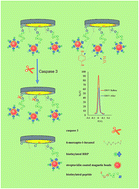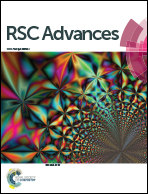A reliable self-assembled peptide based electrochemical biosensor for detection of caspase 3 activity and apoptosis
Abstract
A sensitive electrochemical self-assembled peptide based biosensor was developed for detection of caspase 3 activity and apoptosis using the Asp-Glu-Val-Asp (DEVD) modified peptide and horseradish peroxidase (HRP) as cleaving and electron transfer (current amplifier) agents, respectively. Streptavidin coated magnetic beads (MB) were used to increase the loading efficiency of HRP on the DEVD modified peptide. The electrochemical behaviors were investigated by cyclic, linear sweep and square wave voltammetry techniques. The results were also further evaluated by electrochemical impedance spectroscopy. The experimental conditions influencing caspase 3 analysis were optimized in terms of buffer pH, hydrogen peroxide concentration, incubation time and ratio of MB to HRP. The limit of detection (LOD) of the designed biosensor was found as 100 pM. The proposed biosensor was successfully applied to determine caspase 3 activity in human lung cancer cells treated with doxorubicin which suggests that the biosensor could be applicable for analysis of caspase 3 activity and detection of apoptosis in real samples.


 Please wait while we load your content...
Please wait while we load your content...